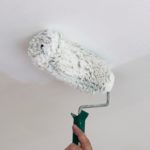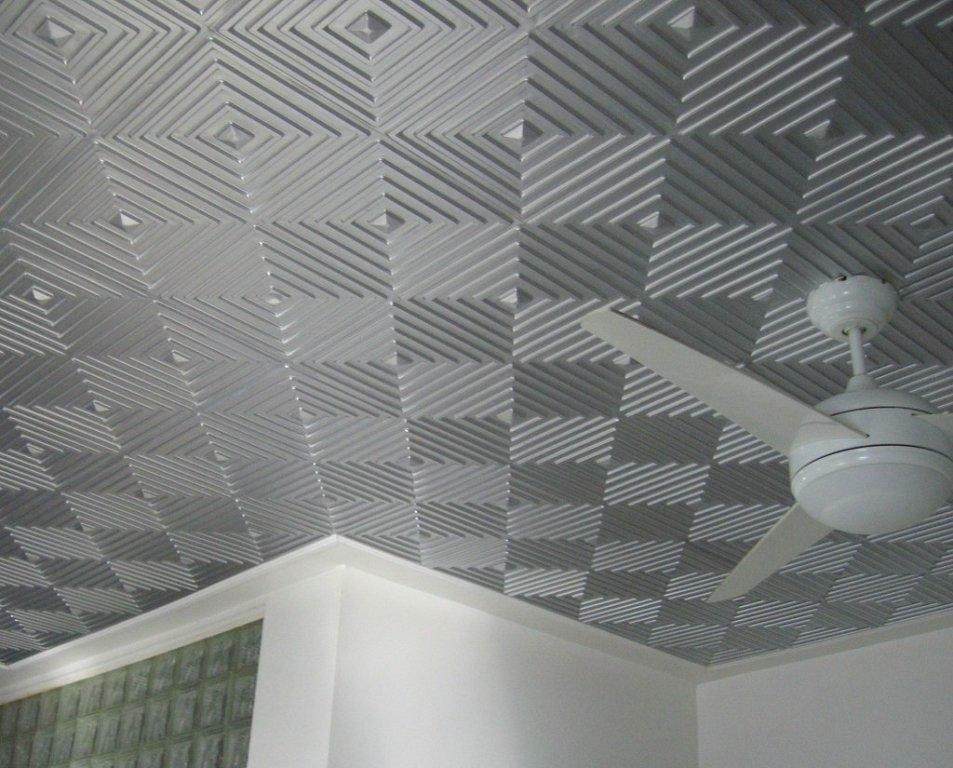DIY suspended ceiling
It’s not at all difficult to build a suspended ceiling with your own hands. This is a good solution for those who are used to doing repairs themselves. No additional surface treatment is required. You just need to calculate the area, install the frame and attach the selected material.

The content of the article
How to make an Armstrong suspended ceiling?
Such structures are often installed in office premises and public buildings. It is a metal frame with brackets. Cassette panels of the same shape and size are attached to it. The most popular option is a slatted mirror ceiling.
Tools and materials
An online calculator will help you calculate the number of consumables, but It’s better to use a diagram drawn on paper. It's more reliable and simpler.
Need to purchase:
- short screws for metal (up to 4 cm);
- guide and ceiling profiles;
- seal;
- hangers for fastening;
- nails with dowels;
- connector;
- primer and putty;
- rollers, paint and glue.
After purchasing materials and fastenings, we begin the work.

Preparing the rough surface
First we mark the ceiling. Its base will be a horizontal strip along the perimeter of the room.We provide an indentation of 10 to 15 cm. We attach the profile and hangers to the line. The mechanisms on them allow you to adjust the surface plane.
Next, the main and transverse structures are installed. They form cells on which panel mirrors are laid.
Step-by-step instructions for installing a suspended ceiling
The frame is pre-installed. This is usually a wooden or metal sheathing. After purchasing the necessary materials, you can begin step-by-step work.

Installation of a single-level ceiling
The action plan is simple. With basic knowledge in construction and the availability of tools, making a single-level suspended structure will not be difficult:
- Use a tape measure to measure the height of the corners. It's worth starting with the lowest of them.
- We go down about 8 cm and put a point. If you plan to install lamps, the indentation may be increased.
- The marks at the corners should correspond to the level of the first point.
- We connect each of them with a masking cord.
- We fasten the supporting profiles along the lines. We drill holes in them, as well as in the wall.
- We fix them with a sealant or nails on the prepared surface.
- We draw a 40 cm indent for the hangers.
- When the jumpers are at a distance of 2.5 m, hangers are attached every half a meter.
- Holes for them must correspond to the original markup. We place anchors along the recesses to avoid sagging of the material.
- During installation, we check the joints. We attach the slats to the hangers in the direction from the corner to the center of the room.
- We secure the jumpers with crabs.
- We fix the material (you need to cut off the edge with a margin for better connection with the putty).
- We lay the sheets offset and secure them with self-tapping screws after approximately 20 cm.
You don't need to do anything else.As a rule, finishing is not needed, since cassette panels have an attractive front side and serve as an additional decoration for the room.
If plasterboard or plywood was chosen as the material, painting, coating with plaster, wallpaper or other type of decor will be required.

Multi-level design
This is a more complex job, but if you have a drawing, you can do it yourself. This option is used in spacious, high rooms. Feature - the second level will occupy only part of the ceiling area and will look like a box or inserts of the same size in the corners.
This method will not affect the height of the ceiling.
In rooms over 3.5 m, a three-level or more structure can be installed.
Finishing
Represents painting, wallpapering or plastering. First you need to cover the seams, joints and nail holes. Initially the surface is primed and then treated with putty. We put a reinforcing mesh on the first layer, which we will subsequently close.
The joints of the material should be rounded: this way the putty will grip better and dry faster.
When the entire surface has been processed, seams and irregularities have been smoothed out, we apply and level the final layer.

Advantages of a suspended ceiling
The advantages of such a system much more than disadvantages.
Main advantages of the design:
- hides defects on the ceiling;
- practical, can be washed with water, resistant to stains;
- any lighting can be connected, while the wiring will be hidden;
- do not collect moisture, suitable for bathrooms and pools;
- fit perfectly into any interior.
If you carry out high-quality preparatory work before installation, have all the tools and drawings, installing a suspended ceiling will not take much time and effort. It is quite possible to complete it efficiently within one day.





